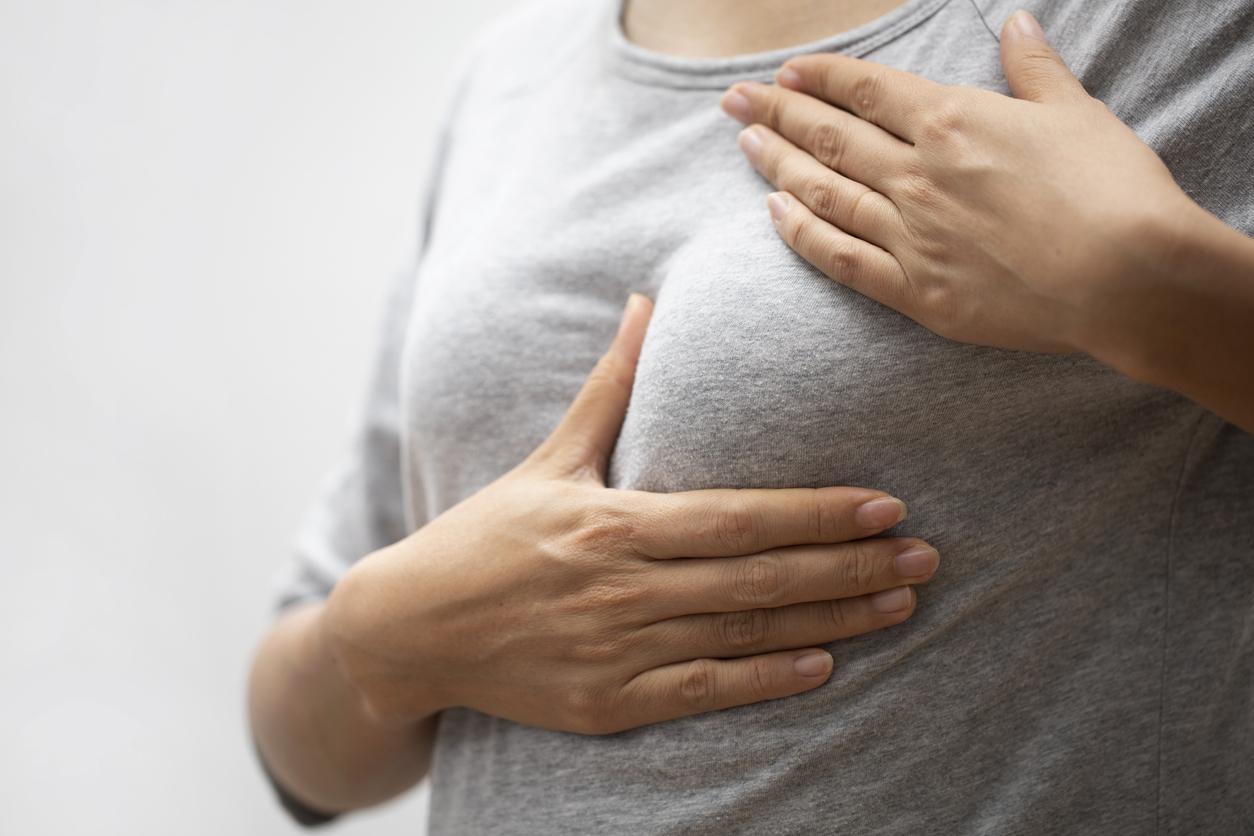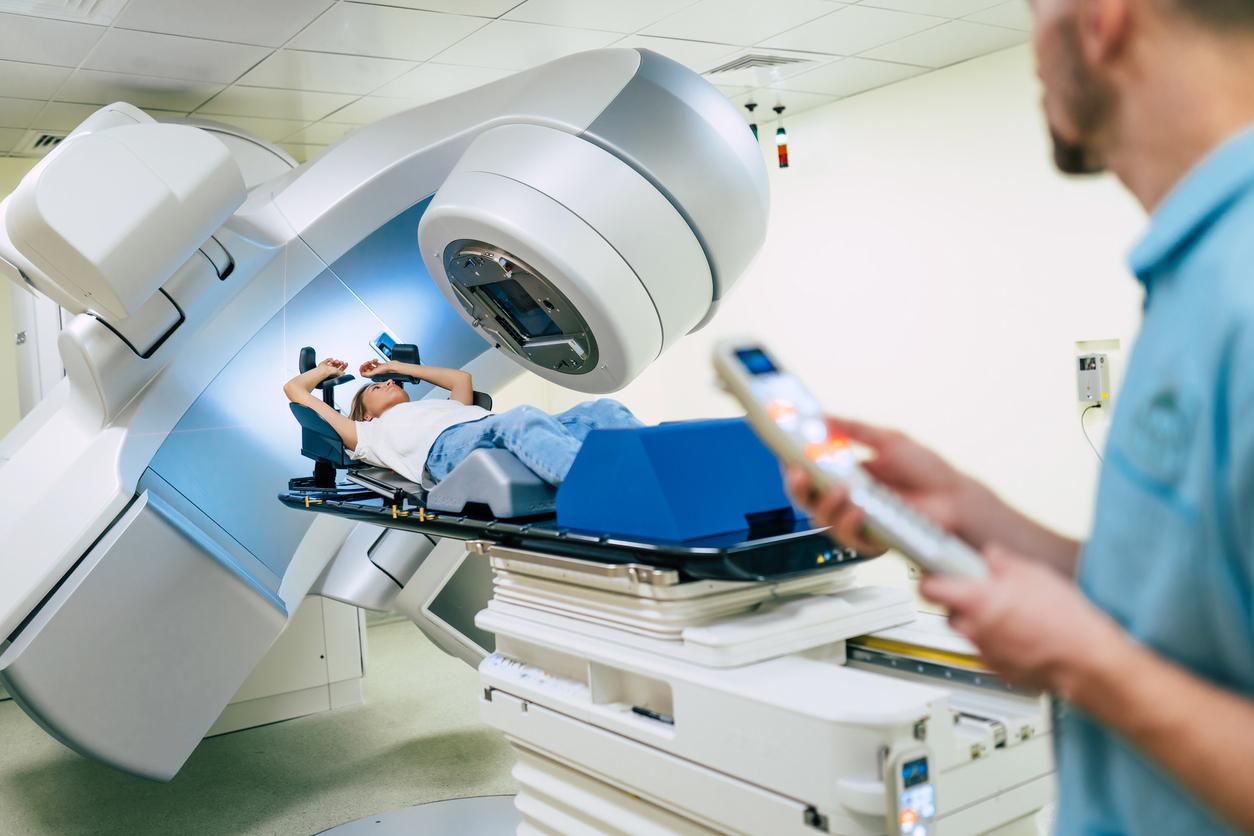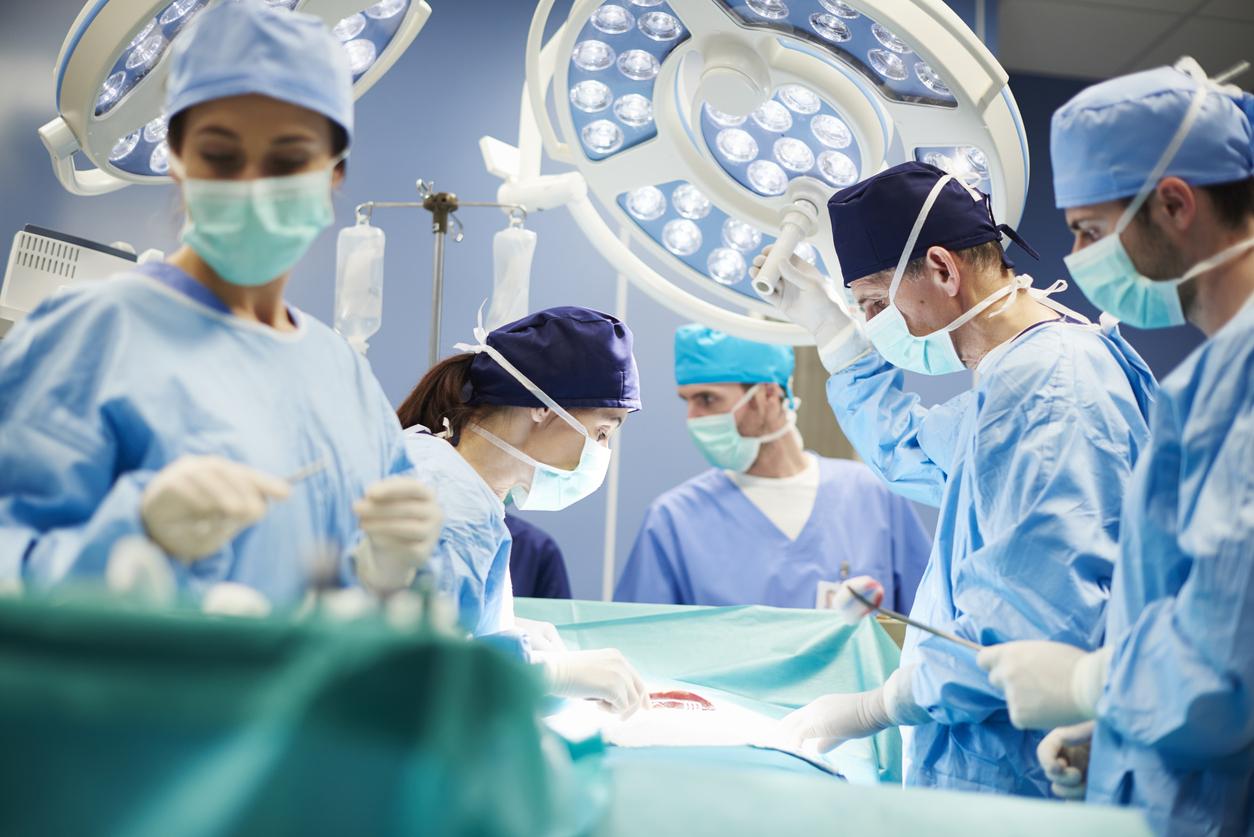It is 7:50 a.m., April 1st. The sun rises in the mist above the dunes of Lompoul, and the crews of the Rose Trip trek pass by to pick up their GPS trackers before setting off for the first stage of this solidarity adventure in Senegal. The temperature is already high, the runners dread this first day of compass orientation. Among them, there is Anne-Sophie, from team 117, accompanied by Anne-Charlotte and Isabelle. Anne-Sophie joined the project late, because the third teammate became pregnant. His presence here is by chance… With the exception that the 40-year-old runner is affected by one of the causes at the heart of this Desertours trek: the breast cancer.
She is not affected by it, but is one of the 2 out of 1000 women with a mutation of BRCA1 genewhich drastically increases the risk of developing breast cancer before the age of 70: “From 40 to 85% compared to 10% in the general population“, recalls theNational Cancer Institute. It is also known to increase the rate of ovarian cancer. Anne-Sophie arrived on this adventure with certain answers: she knows that to protect herself from these diseases, she can do a preventive mastectomy, in addition to the ovariectomy she has already undergone.
But he still has questions: what her chest will look like after this kind of surgery ? Will he be left with a nipple, sensations, scars? “Taking the step of this operation is a way to settle the question of cancer. But it’s not so obvious, it’s a sacrifice… Beyond aesthetics, it’s mourning a symbol of femininity“, she begins.
“There is very little chance of cutting it”
Her story with breast cancer began with the illness of her mother, who was then 45 years old. Due to a family history, the oncologist advises to do a genetic test to see if she is a carrier of a BRCA1 or BRCA2 type genetic mutation. Ten months after the test, the results come back positive for the first. The interest of this research is to be able to track down his three daughters: at 33, Anne-Sophie learns that she has it, like one of her sisters. “This discovery did not worry me because we have access to a whole annual protocol: mammography, ultrasound, MRI. The follow-up is very reassuring, even if given the percentages, we quickly realize that there is very little chance of cutting it…” she smiled.
The young woman is listening to the options that can save her from going through cancer. Either two types of removals: that of the ovaries, and that of both breasts. The first is precipitated by large cysts that require intervention. She told herself that as long as she could, she might as well take everything out and avoid having to go to the operating room again ten years later. “I already had two children. I made the decision in the doctor’s office, very quickly. But just before the operation, I had a wave of questions: I realized that it was giving up a large part of femininity, suddenly I wasn’t so sure I didn’t want a third child.“.
She takes the step anyway, and lives a intense hormonal disruption, because of this menopause in accelerated version. “After three days, I had these immeasurable hot flashes, I was on edge, I was having crying fits. I said to myself: but what have I done? I am no longer a woman! This hormonal shock, which I had not been told, was like a slap in the face“. The post-operative appointment allows him to have hormone treatment to alleviate the side effects.
What do we do with the chest?
But quickly comes the second question: what to do with the chest? “At first, I thought I wanted to do it right away. But my oncologist told me to think about it, to digest the oophorectomy first. I made an appointment with the surgeon, to understand how it was going to happen“. Anne-Sophie knows thatwith this type of operation, one can have a reconstruction immediate : we come out of the block with breast prostheses. But she knows nothing about the surgical technique. “He told me there were two schools. Some leave the nipple on, and some remove it. Keeping it persists in the risk of cancer, to which is added another risk, necrosis of the nipple. The surgeon explained to me that it was necessary to scrape as much as possible inside the breast to preserve me from developing the disease one day.“In fact, the nipple is no longer sufficiently vascularized, and he prefers to remove it.
“Before I knew it was being removed, this surgery didn’t bother me at all.“, remarks Anne-Sophie, who now finds it difficult to project herself. Especially since the “after” photos that we showed her are far from convincing. “In the meantime, my oncologist has retired… For two years, I’ve let it go, I haven’t done any more exams.” And now the opportunity for the Rose Trip presents itself, which collects donations for the Ruban Rose association at each edition and which counts among its runners many survivors of diseases of all kinds, and breast cancer in particular. Anne-Sophie thinks that maybe she will meet other women there who share her story, who can give her feedback, help her go back to see this surgeon…
“We sat in a corner, she showed me her breasts”
The trigger did not quite happen on the course of the trek. The subject of breast cancer often squats the bivouac discussions where the runners reside during the four days of the race. The second evening, Anne-Sophie queues for the showers, and starts a discussion about preventive mastectomy with another trekker. Their towel under their arm, they talk about this genetic mutation and the three years of questioning which have not yet found an answer on her side.
“And then this other runner tells me that she’s been there, thatshe had surgery on both breasts with total reconstruction, including the addition of fat to reform a replacement nipple. She then had a nipple tattoo done. Of course, I asked him what it looked like. We sat in a corner, she showed me her breasts: it was perfect, I hallucinated. The scar was very light, the nipple was real, it reassured me enormously and I told myself that I was going to opt for the same technique as her!“
On the sidelines of the sporting challenge, “I found myself going to see anyone, at any time, and very quickly approaching intimate subjects. There is no modesty, but no competition either. We feel in a benevolent atmosphere where sorority takes precedence. I think the causes defended by the trek set the tone of the trip… I heard a lot of stories about breast cancer there, I saw girls who came there to relieve themselves. It’s an amazing outlet for many women“, she finishes.
















